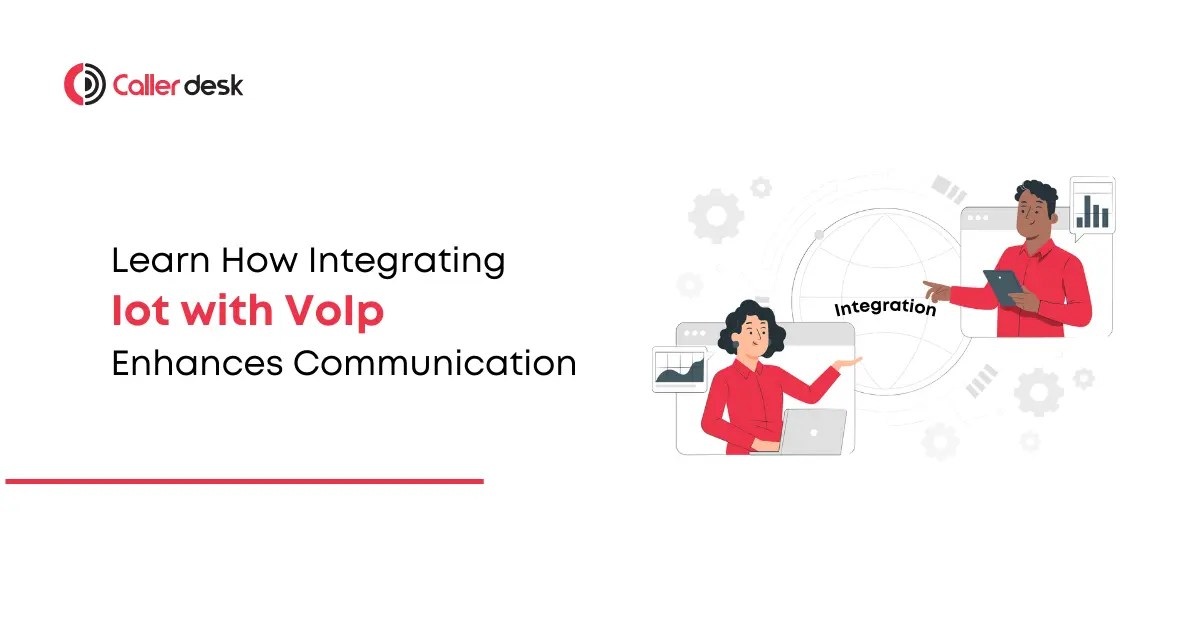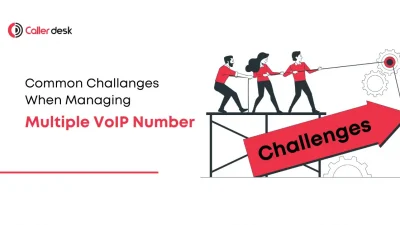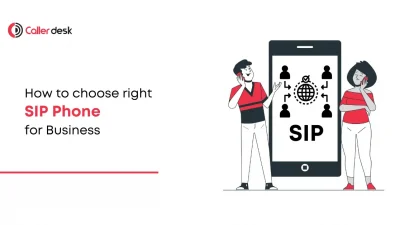What if your communication systems weren’t just fast but also smart? With the integration of IoT (Internet of Things) and VoIP (Voice over Internet Protocol), businesses are entering a new era of connected communication.
But what does IoT and VoIP integration really mean?
- IoT: Connects physical devices to the internet, enabling them to send and receive data.
- VoIP: Transmits voice communication over IP networks for faster, more flexible connectivity.
When combined, these technologies create a seamless communication ecosystem where devices and people interact effortlessly. For example, IoT-enabled devices in an office can communicate through VoIP systems, offering real-time insights and control to users.
In this blog, we’ll explore how IoT and VoIP integration enhances communication systems, making them more efficient, secure, and adaptable to your business needs.
1. Real-Time Information Sharing
IoT devices like smart sensors collect real-time data, which is shared through VoIP systems, ensuring instant updates and informed decision-making.
- Faster Response Times: Reduce customer service resolution times by up to 20% with instant access to relevant information.
- Seamless Collaboration: Ensure all team members have access to the same data, improving coordination and efficiency.
In a call center, IoT-enabled sensors track customer behavior and preferences. VoIP systems deliver this information to agents during calls, enabling faster responses and better support.
2. Enhanced Customer Experience
IoT-enabled devices capture valuable data like customer purchase history and behavior patterns. When integrated with VoIP, this data is accessible during calls, allowing for personalized interactions.
- Boost Customer Satisfaction: Provide tailored recommendations during calls, building trust and loyalty.
- Proactive Engagement: Anticipate customer needs based on real-time data, reducing frustration and increasing retention.
In retail, an IoT-powered loyalty program tracks a customer’s recent purchases. When the customer calls for support, VoIP provides the agent with their preferences, enabling proactive upselling and issue resolution.
3. Automation for Cost Efficiency
IoT and VoIP integration automates routine tasks like call routing, quality monitoring, and issue detection, significantly reducing manual intervention.
- Save Costs: Minimize downtime and reduce maintenance costs with automated alerts and real-time issue resolution.
- Optimize Workflows: Use IoT data to route calls intelligently, ensuring high-priority cases are handled promptly.
In manufacturing, IoT sensors monitor machine performance. If an issue arises, the system automatically connects the appropriate technician via VoIP, reducing delays and preventing costly downtime.
4. Protect Data with Dual-Layered Defense
IoT’s real-time monitoring capabilities pair with VoIP’s encrypted communication to provide dual-layered security, protecting sensitive business and customer data.
- Prevent Data Breaches: Real-time alerts flag suspicious activity, allowing for immediate intervention.
- Ensure Compliance: Meet regulatory standards like GDPR and HIPAA, building trust with clients.
In healthcare, IoT devices monitor patient health metrics. VoIP ensures secure communication between doctors and patients, complying with stringent data protection laws.
5. Flexibility and Scalability
IoT and VoIP integration makes communication systems adaptable, allowing businesses to scale operations and integrate emerging technologies effortlessly.
- Seamless Expansion: Add devices and users without costly infrastructure overhauls.
- Stay Competitive: Leverage cutting-edge tools like AI and IoT to remain at the forefront of your industry.
In a smart office building, IoT sensors manage meeting room availability. VoIP notifies employees of updates, ensuring smoother operations and improved resource utilization.
Why IoT and VoIP Are the Future of Communication
The integration of IoT with VoIP is not just a technological upgrade—it’s a game-changing innovation for businesses seeking efficiency, customer satisfaction, and long-term growth.
By embracing IoT and VoIP, businesses can:
- Simplify Operations: Automate workflows and reduce inefficiencies.
- Deliver Better Experiences: Personalize interactions and engage proactively with customers.
- Ensure Scalability: Adapt to growth and emerging technologies with ease.
Take Action:
Ready to unlock the potential of IoT and VoIP integration? CallerDesk offers cutting-edge cloud-based communication solutions tailored to your business needs.
- Schedule a Free Consultation to explore how IoT and VoIP can revolutionize your communication systems.
- Don’t wait! Start building smarter, more efficient workflows today.
Frequently Asked Questions
1. What is IoT and VoIP integration?
IoT connects physical devices to the internet for data sharing, while VoIP enables voice communication over IP networks. Their integration creates a seamless ecosystem for smarter communication.
2. How does IoT and VoIP integration improve customer experience?
By providing real-time access to customer data, agents can personalize interactions, anticipate needs, and resolve issues faster, boosting satisfaction.
3. What security benefits does IoT and VoIP integration offer?
This integration combines IoT’s real-time network monitoring with VoIP’s encrypted communication, ensuring dual-layered protection against cyber threats.
4. Can IoT and VoIP integration reduce costs for businesses?
Yes, automation through IoT devices minimizes downtime, optimizes workflows, and reduces manual intervention, leading to significant cost savings.
5. Is IoT and VoIP integration scalable?
Absolutely. As businesses grow, these systems can easily scale to accommodate new devices, users, and emerging technologies.





